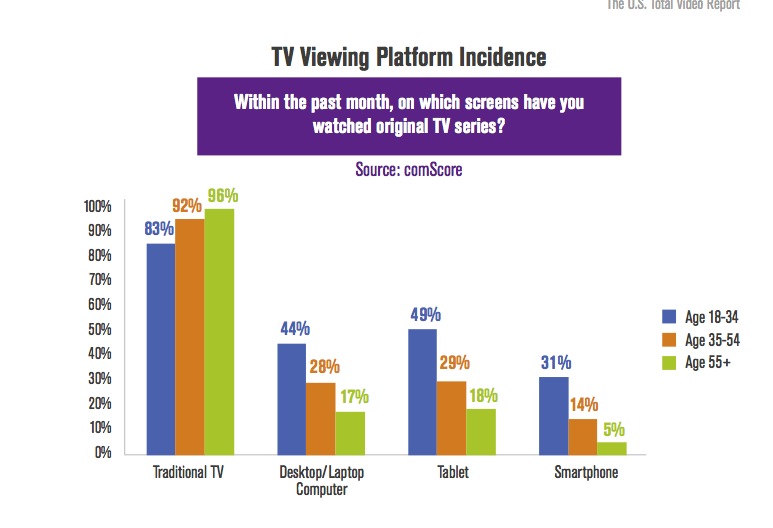One surmises from the latest report from comScore {link no longer active} today that millennials are really proving to be not just cordcutters, but are shifting screen preference elsewhere. And why not? Traditional TV sets are usually more costly, unweildy and not nearly as interactive as laptops, tablets and smartphones.
There has been some slight concern over the demise of certain TV viewing audiences, mainly due to the availability of streaming services and the quality shows they’re providing. However, despite such concerns, it appears that comScore is calming a few nerves, as it has managed to come up with some numbers that indicate that there’s still plenty of viewing to go around, according to a story from Recode.net.
Of the smaller screens, tablets are unsurpsingly the favorite of millennial viewers. Desktop/laptops still have a stronghold over smartphones, probably due to screen size, making the case for phablets a strong one.

According to the report, “About one out of six Millenials said they did not watch any original TV series from traditional TV sets within the past 30 days, a significant trend highlighting the potential for linear TV viewing to erode over time.”
For the 35+ set, screen preference mirrors those of younger viewers, although the adoption rate is much less. While TV sets are still the most popular screens for all ages surveyed, it is clear that the format– not just cable– is in trouble too.
When it comes to spending habits on pay television, however, not everyone is on board. The report shows that 24 percent of millennials don’t invest in such services as HBO or Showtime, and half of that group — 13 percent of the overall polled group — don’t watch TV at all. In a startling revelation, 11 percent don’t even use a TV at all, instead relying on other means for viewing.
So what does this mean TV viewing continues to be on a steady level when it comes to attracting key audiences, even though some pay channels don’t quite have the outreach that certain companies were hoping for. That said, viewing programming on mobile devices and computers is also on the rise, and while that may not be a heavy concern now, a few years may prove all the difference, especially with more exclusives heading to the likes of Netflix and Hulu.

